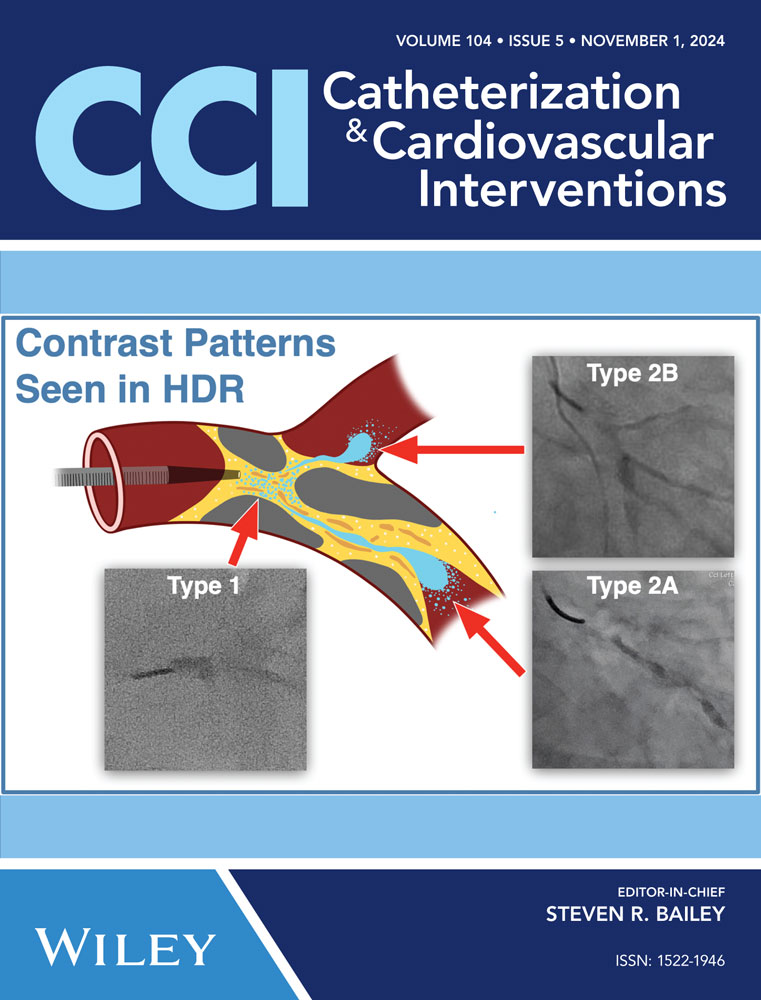Elevated myocardial extracellular volume fraction is associated with the development of conduction pathway defects following transcatheter aortic valve replacement
Rafey Feroze and Puneet Kang contributed equally to this study.
Abstract
Background
Transcatheter aortic valve replacement (TAVR) has become an established method of aortic stenosis treatment but suffers from the risk of heart block and pacemaker requirement. Risk stratification for patients who may develop heart block remains imperfect. Simultaneously, myocardial fibrosis as measured by cardiac magnetic resonance imaging (CMR) has been demonstrated as a prognostic indicator of ventricular recovery and mortality following TAVR. However, the association of CMR-based measures of myocardial fibrosis with post-TAVR conduction disturbances has not yet been explored.
Aims
We evaluated whether myocardial fibrosis, as measured by late gadolinium enhancement and extracellular volume (ECV) from CMR would be associated with new conduction abnormalities following TAVR.
Methods
One hundred seventy patients who underwent CMR within 2 months before TAVR were retrospectively reviewed. Septal late gadolinium enhancement (LGE) and ECV measurements were made as surrogates for replacement and interstitial fibrosis respectively. New conduction abnormalities were defined by the presence of transient or permanent atrioventricular block, new bundle branch blocks, and need for permanent pacemaker. Association of myocardial fibrosis and new conduction derangements were tested using receiver operator curve (ROC) and regression analysis in patients with and without pre-existing conduction issues.
Results
Forty-six (27.1%) patients developed post-TAVR conduction deficits. ECV was significantly higher among patients who experienced new conduction defects (26.2 ± 3.45% vs. 24.7% ± 4.15%, p value: 0.020). A greater fraction of patients that had new conduction defects had an elevated ECV of ≥26% (54.3% vs. 36.3%, p value: 0.026). ECV ≥ 26% was independently associated with the development of new conduction defects (odds ratio [OR]: 2.364, p value: 0.030). ROC analysis revealed a significant association of ECV with new conduction defects with an area under the receiver operating characteristic curve (AUC) of 0.632 (95% confidence interval: 0.555–0.705, p value: 0.005). The combination of prior right bundle branch block (RBBB) and ECV revealed a greater AUC of 0.779 (0.709–0.839, p value: <0.001) than RBBB alone (Delong p value: 0.049). No association of LGE/ECV with new conduction defects was observed among patients with pre-existing conduction disease. Among patients without baseline conduction disease, ECV was independently associated with the development of new conduction deficits (OR: 3.685, p value: 0.008).
Conclusion
The present study explored the association of myocardial fibrosis, as measured by LGE and ECV with conduction deficits post-TAVR. Our results demonstrate an association of ECV, and thereby interstitial myocardial fibrosis, with new conduction derangement post-TAVR and introduce ECV as a potentially new risk stratification tool to identify patients at higher risk for needing post-TAVR surveillance and/or permanent pacemaker.
CONFLICT OF INTEREST STATEMENT
Dr. Guilherme F. Attizzani is a consultant for Medtronic. The remaining authors declare no conflict of interest.
Open Research
DATA AVAILABILITY STATEMENT
The data that support the findings of this study are available from the corresponding author upon reasonable request.




